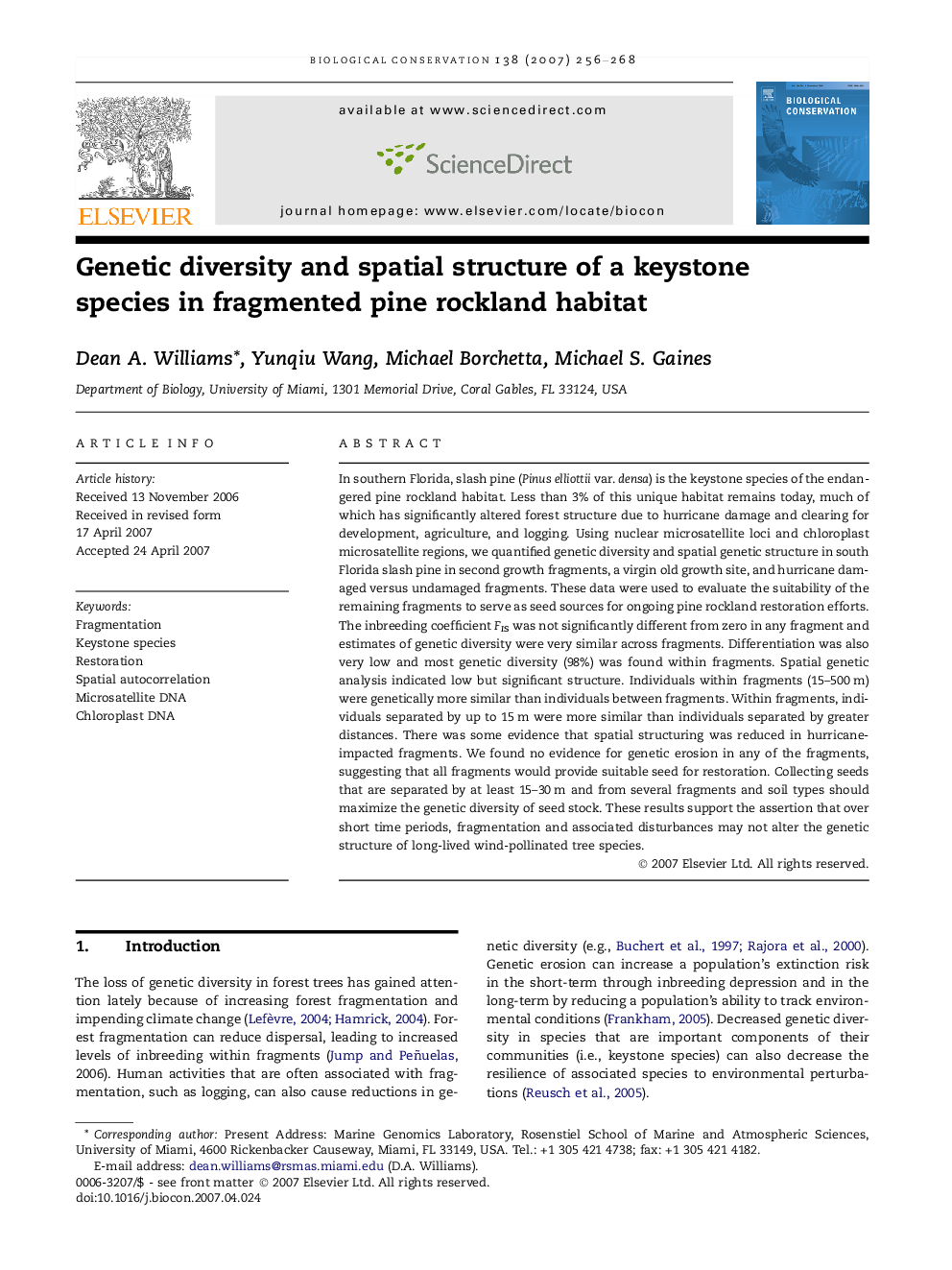| Article ID | Journal | Published Year | Pages | File Type |
|---|---|---|---|---|
| 4387266 | Biological Conservation | 2007 | 13 Pages |
In southern Florida, slash pine (Pinus elliottii var. densa) is the keystone species of the endangered pine rockland habitat. Less than 3% of this unique habitat remains today, much of which has significantly altered forest structure due to hurricane damage and clearing for development, agriculture, and logging. Using nuclear microsatellite loci and chloroplast microsatellite regions, we quantified genetic diversity and spatial genetic structure in south Florida slash pine in second growth fragments, a virgin old growth site, and hurricane damaged versus undamaged fragments. These data were used to evaluate the suitability of the remaining fragments to serve as seed sources for ongoing pine rockland restoration efforts. The inbreeding coefficient FIS was not significantly different from zero in any fragment and estimates of genetic diversity were very similar across fragments. Differentiation was also very low and most genetic diversity (98%) was found within fragments. Spatial genetic analysis indicated low but significant structure. Individuals within fragments (15–500 m) were genetically more similar than individuals between fragments. Within fragments, individuals separated by up to 15 m were more similar than individuals separated by greater distances. There was some evidence that spatial structuring was reduced in hurricane-impacted fragments. We found no evidence for genetic erosion in any of the fragments, suggesting that all fragments would provide suitable seed for restoration. Collecting seeds that are separated by at least 15–30 m and from several fragments and soil types should maximize the genetic diversity of seed stock. These results support the assertion that over short time periods, fragmentation and associated disturbances may not alter the genetic structure of long-lived wind-pollinated tree species.
